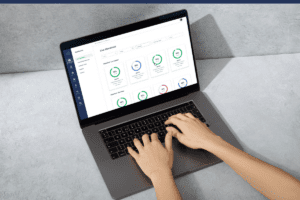4 Ways Eliminating Manual Data Entry is Benefiting Vocational Institutions
These four tips will help your staff streamline operations by eliminating manual data entry — and the error rate that comes with it.
Vocational institutions across the country experience inaccurate or delayed attendance data due to manual data entry, and it’s reflected in problems like high staff turnover or low enrollment and retention rates.
Most manual data entry happens when administrators enter information into the SIS by hand from stacks of paper attendance checklists, worksheets, and spreadsheets. This causes delays in obtaining critical information that impacts students. Other times, it leads to burned-out administrators, educators, and enrollment and retention teams. A recent study on manual data entry concluded that 260 out of 6,930 manual entries had discrepancies.
Many vocational schools experience costly compliance challenges due to high error rates — now imagine 260 of them.
Collecting and posting attendance data is one of the biggest reasons for manual data entry. When not accurately reflected in school records, it can be flagged during an audit or, worse — cause a borrower’s defense claim.
If attendance data isn’t accurately reflected in school records, it could be flagged during an audit. Or worse, schools may face a borrower’s defense claim.
Fortunately, software has eliminated tedious manual data entry processes. CourseKey’s vocational intelligence platform removes the need for tedious processes that rely on manual data entry.
Read these four tips to see how eliminating manual data entry benefits vocational schools.
1. Obtain FDA in real-time when you eliminate manual data entry
Manually entering attendance data into the SIS takes time — time staff could use on higher-value tasks. Instead, administrators spend hours pulling the First Date of Attendance (FDA) so enrollment representatives know who attended day one. With manual data entry, FDA gets delayed, and schools may not know a student wasn’t there until several days after the first day.
Schools that utilize a vocational intelligence platform to digitize attendance collection receive FDA data in real-time. Students check in and out on their mobile devices, and the software transfers the data into the SIS. If a student is absent, instructors and administrators are privy to the absence right away. This maximizes the time staff members have to reach out to absent students and get them to attend class, switching their status from ‘enrolled’ to ‘active.
Curious about other ways to improve retention rates? Here are our Top Ten Retention Tips in Less Than Ten Minutes.
2. Eliminating manual data entry means you have LDA in real-time
Last Date of Attendance (LDA) is a critical compliance metric that many schools struggle to obtain within the timeframe dictated by the Department of Ed. Ena Hull, COO of Legacy Education, explains her past experience in a recent interview: “Previously when that attendance was recorded manually, there may be five, six, seven, even twenty days before we get that paper roster and it’s posted,” Ena says. “There were times we were out of compliance because by the time the registrar posted that attendance, we were outside of the window.”
Picture this: Administrators are scrutinizing attendance checklists for LDA to save students at risk of dropping. They know that an error in attendance data could lead to a discrepancy in their R2T4 calculations.
Software shows LDA the moment administrators need it. Staff no longer have to worry about calculating R2T4. Read this guide to discover how Ena and others like her simplified compliance with CourseKey.
3. Save hours per week collecting attendance data from asynchronous environments
Tracking attendance in an asynchronous program or blended learning environment is a challenge many schools are tackling head-on. Software creates and uploads asynchronous attendance data, so instructors and administrators don’t have to.
Admins at CourseKey partner institution Hawaii Medical College (HMC) used to spend three hours each week entering async data into their SIS. After adopting CourseKey, they’re using that time for other important tasks.
As Kevin Awaya, Co-Director of Education told us: “Now the instructors don’t have to do anything for asynchronous attendance tracking,” he said. “They spend the extra three hours per week engaging with the students instead of manually entering time. They’re very happy because it eliminated a tedious task.”
4. Decrease burnout and increase instructor satisfaction
35% of college and university workers say they feel burned out and are leaving their positions in droves for more work-life balance. Help prevent high turnover by eliminating manual data entry.
“CourseKey is a lifesaver. It makes it so easy for educators,” said Brian Scott, Educator at Bellus Academy. “They clock in themselves; they clock out themselves. I look for discrepancies at the end of the day. It takes me maybe five minutes.”
Software gives instructors the time they need to prevent their own burnout and focus on what’s most important — the students.
CourseKey’s vocational intelligence platform eliminates manual data entry
CourseKey eliminates manual data entry for 300+ campuses across the country. Our software helps increase enrollments, improve retention and compliance, and elevate instructor satisfaction.
Recent Articles

















